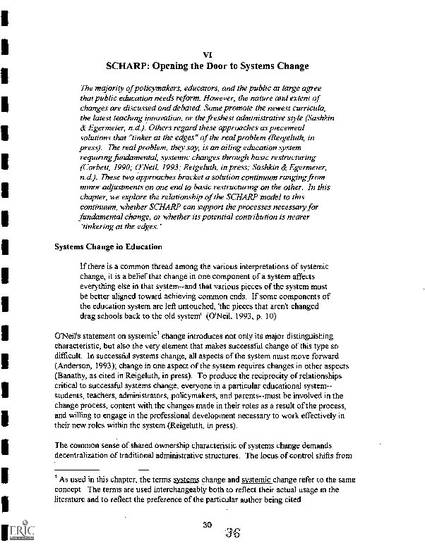
- Educational administration,
- Educational change -- United States,
- Universities and colleges -- Administration
The majority of policymakers, educators, and the public at large agree that public education needs reform. However, the nature and extent of changes are discussed and debated. Some promote the newest curricula,the latest teaching innovation, or the freshest administrative style (Sashkin & Egermeier, n.d). Others regard these approaches as piecemeal solutions that "tinker at the edges" of the real problem (Reigeluth, in press). The real problem, they say, is an ailing education system requiring fundamental, systemic changes through basic restructuring(Corbett, 1990; O'Neil, 1993; Reigeluth, in press; Sashkin & Egermeier,n. d.). These two approaches bracket a solution continuum ranging from minor adjustments on one end to basic restructuring on the other. In this chapter, we explore the relationship of the SCHARP model to thiscontinuum, whether SCHARP can support the processes necessary for fundamental change, or whether its potential contribution is nearer 'tinkering at the edges.'

©1995 Northwest Regional Educational Laboratory, Portland OR